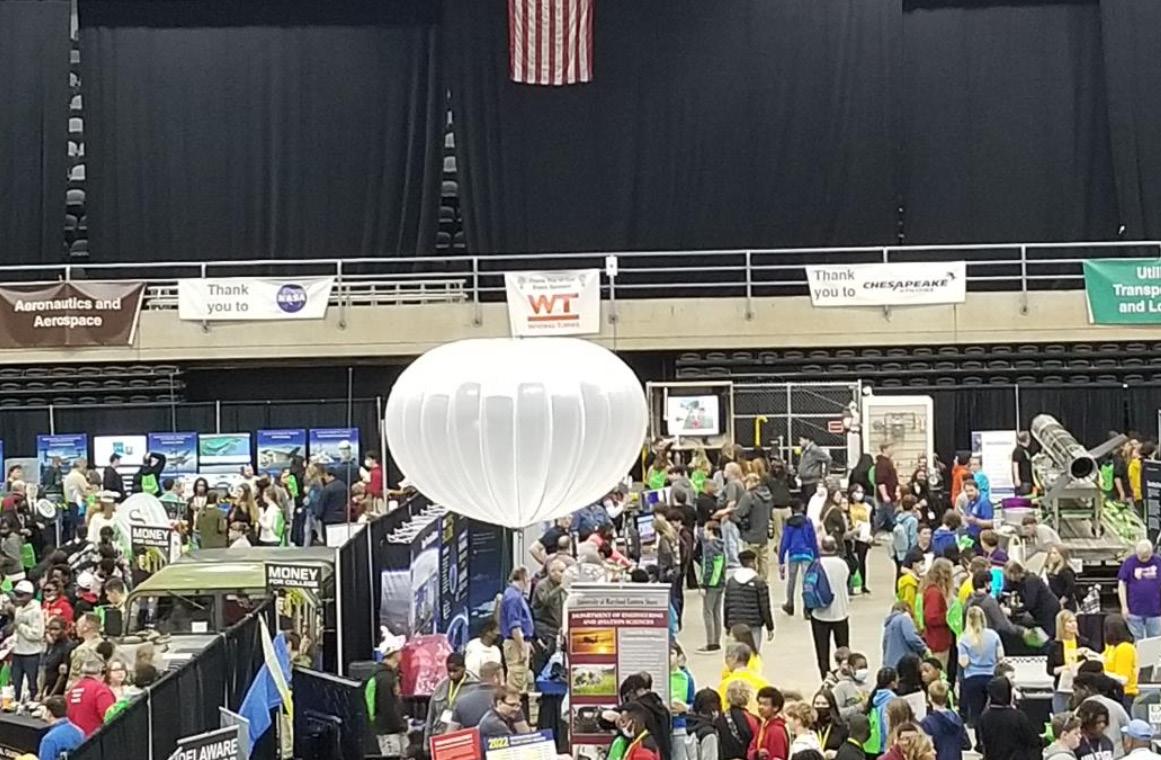
4 minute read
SOLAR CYCLE 25
HELIOPHYSICS
HIGHLIGHTING THE IMPORTANCE OF THE HELIOPHYSICS FLEET
December 2019 marked the beginning of the latest solar cycle – Solar Cycle 25 (or 25th since 1755) – a nearly periodic 11-year change in the Sun’s activity, measured in terms of variations in observed sunspots on the solar surface. The Sun’s activity has quickly ramped up, and even though peak levels in this cycle have yet to be reached, the Sun’s activity is already exceeding predictions. Solar events will continue to increase as we near solar maximum – the greatest period of solar activity in this cycle – in 2025, and our lives and technology on Earth, as well as satellites and astronauts in space, will be impacted.
With more activity comes an increase in space weather events, including solar flares and solar eruptions, which can impact radio communications, electric power grids, and navigation signals, as well as pose risks to spacecraft and astronauts. Humans have an increasing dependence on space-based technology and ground-based infrastructure that are susceptible to the dynamic nature of space. For many new commercial and government stakeholders, this already stronger-than-expected solar cycle will be the first they navigate.
Space Weather and Global Impacts
There are more than 35,000 objects orbiting in the ionosphere-thermosphere (I-T) region around our planet, including the International Space Station, weather and communications satellites, and other operational government assets, with many more being launched each year. In addition, astronauts who are part of the Artemis missions will travel through this region on their journey to the Moon. When the I-T system is pummeled by solar and geomagnetic activity, these assets are adversely affected.

For example: • Variable satellite drag due to atmospheric heating modifies spacecraft operations and orbits.
This can cause satellites to reenter Earth’s atmosphere prematurely, decrease satellite lifetimes, increase the risk of orbital collisions, and cause spacecraft to be out of optimal position for their mission. • Radiofrequency communication and navigation capabilities are degraded. • GPS positioning experiences errors due to the ionospheric disturbances (in plasma density) that occur on regional scales (a continent or larger). • Space-to-surface transmission noise is increased. This affects military monitoring of the north polar region and communications globally. • During times of geomagnetic activity, the near-polar regions experience high fluxes of radiation in the form of energetic particles.
These particles can travel to low altitudes, where they become a concern for airplane flight crews and passenger health. • When intense electrical currents driven by space weather flow overhead in the I-T system, they can produce enormous
“mirror” currents in power lines and pipelines. These currents can damage or destroy critical infrastructure, leading to expensive power outages or maintenance and repair costs. The key to making dramatic improvements in our ability to predict and mitigate such events lies in finally understanding Earth’s I-T system. This is the heart of the local space environment: All processes active in near-Earth space start, end, or are modified there. Despite its importance, this transition region is the aspect of Earth’s space environment that is least understood as a global system. NASA’s Heliophysics Division is developing a mission that will provide crucial advances in our understanding of the I-T system – the Geospace Dynamics Constellation (GDC). This mission will provide the first coordinated global-scale observations of the I-T region, where the effects of solar activity are often seen. The mission’s study of the global, coupled system will enable dramatic improvements in our space weather models, which will lead to the mitigation of negative effects on space-based, air-based, and ground-based assets.
Our Eyes on the SunEarth Connection
NASA’s approach to heliophysics is as “system science.” The agency is using the Heliophysics System Observatory as a global observatory, and not just as distinct missions. On the ground, Diversify, Realize, Integrate, Venture, Educate (DRIVE) science centers provide the glue needed to connect and advance NASA’s mission fleet. Goddard has co-investigators who work with the DRIVE centers and manage many of the missions from which the centers use data. The division currently has 19 active missions – with 26 spacecraft – and 13 more under development. These missions work together to provide the full picture of our solar system, from the interior of the Sun, to impacts on Earth, and the Sun’s influence at the very edge of our solar system. The heliophysics mission fleet provides invaluable insights into our Sun, from understanding the corona – the outermost part of the Sun’s atmosphere – to examining the Sun’s impacts throughout the solar system, including here on Earth, in our atmosphere, and into interstellar space. The fleet is not only critical to protecting the technology and infrastructure that support our modern society. It also aids and enables space exploration, including NASA’s Artemis missions to the Moon and Mars. HERMES – a compact spaceweather station that will track solar activity – and ESCAPADE, which will revolutionize our understanding of how solar wind momentum and energy flow throughout Mars’ magnetosphere, are two missions that will help underpin and further the Artemis missions.
In addition to spacecraft, the Moon to Mars Space Weather Analysis Office at Goddard supports the efforts to return astronauts to the Moon by characterizing the space radiation environment there and by providing space weather assessments and anomaly analysis support for robotics.
The next few years will be a time of tremendous innovation, exploration, and inspiration in the division. Efforts are being highlighted through a combined effort called the “Heliophysics Big Year,” which begins with an annular eclipse in October 2023 that will pass through parts of the United States, and includes a total eclipse in April 2024 that will pass through the United States as well, new mission launches, and unprecedented leaps forward in the understanding of space weather and the Sun-Earth connection. The Heliophysics Big Year culminates with Parker Solar Probe’s record-breaking closest approach to the Sun.










